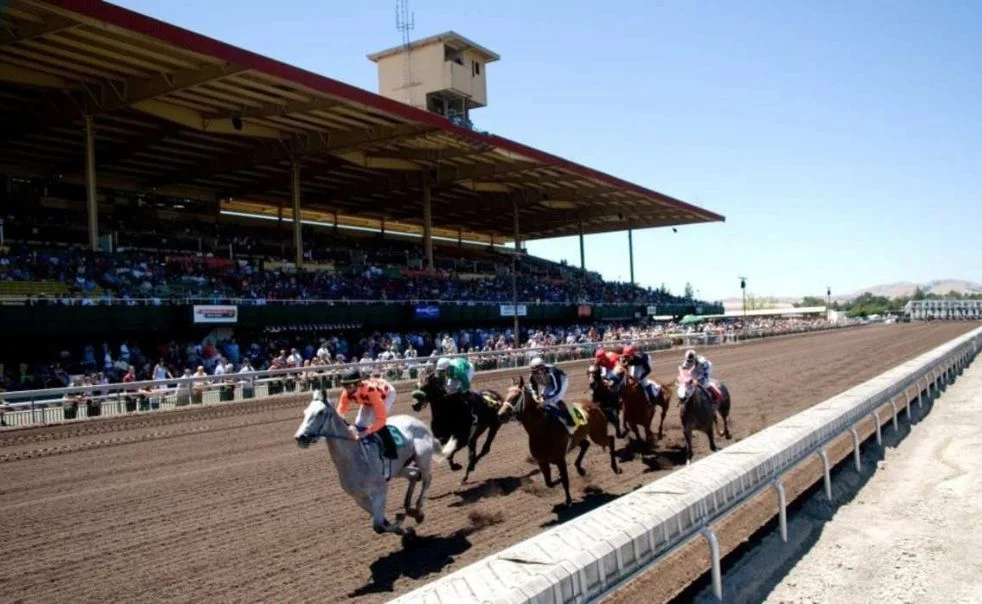Negotiations for Pleasanton Race Track Break Down

Elle
Mar 27th 2025
Likes
Share:
The possibility of a 2025 race meet at the Alameda County Fairgrounds in Pleasanton race track, California, has officially been ruled out. Despite a late effort from longtime California owners and breeders John Harris and George Schmitt to continue racing at the Northern California track, negotiations fell apart on Saturday. As a result, training at Pleasanton race track will no longer be covered after March 25, leaving over 300 horses without racehorses relocation plan.
Harris and Schmitt proposed a racehorses relocation plan last week to keep racing at Pleasanton race track, but multiple challenges emerged. Workers’ compensation concerns played a significant role, as insurance policies for trainers and workers only apply to approved training facilities, and Pleasanton race track will no longer qualify after March 25. Water compliance issues also created obstacles, with regulatory hurdles related to water usage and environmental requirements complicating efforts to move forward. Approval from the California Horse Racing Board (CHRB) proved to be another roadblock, as the track’s ability to be licensed for racing and training faced resistance from regulators.
George Schmitt expressed frustration with the outcome, blaming the Southern California racing contingent for the decision. “The South killed the North,” Schmitt told the Daily Racing Form. “They’re not going to extend training in the North. I am now officially angry.”
Pleasanton race track had been operating as a licensed auxiliary stabling facility for Santa Anita under an agreement between the Southern Stabling and Vanning Committee, the California Authority of Racing Fairs (CARF), and the Alameda County Fair. However, this agreement will now end at midnight on March 25, according to a notice issued by the CHRB.
The CHRB notice stated that Post Time workers’ compensation insurance policies only cover activity at approved training facilities. This means the policies will no longer apply to Pleasanton Race Track after March 25.
With Golden Gate Fields set to close, concerns about coverage have become more pressing. The racehorses relocation plan remains a key issue as owners and trainers look for alternative training sites. Some have considered Golden Gate Fields as a temporary solution, but long-term options are still being discussed.
The Thoroughbred Owners of California (TOC), which oversees racing interests in the state, made it clear that continuing operations at Pleasanton race track was not financially feasible. TOC president and CEO Bill Nader explained to Thoroughbred Daily News that even if all logistical concerns were addressed, the business model did not justify moving forward. He emphasized that sufficient stall space is available at Los Alamitos and San Luis Rey Downs for any horse that needs to relocate.
With Pleasanton race track no longer an option for training, the estimated 300 horses currently based there will need to find alternative locations. Some trainers have already contacted Santa Anita officials to inquire about stall space, though moving operations to Southern California presents logistical and financial challenges for many.
This development comes in light of the shutting down of Golden Gate Fields in June 2024, putting Northern California racing in a very vulnerable position. A consortium that included CARF attempted to run a two-month race meet at the Pleasanton race track from October through December, failing to generate enough revenue from the endeavor. Schmitt estimated that the losses from that meet were around $135,000 a week.
Given this scenario, CARF was not going to apply for race dates between December 2024 and June 2025. It stated in January that it would not seek race dates at all in 2025 for its four member tracks-Pleasanton, Sacramento, Ferndale, and Fresno.
The loss of Pleasanton race track as a racing and training facility further reduces the options available for Northern California horsemen. Out of the five fairs that usually happen in the city, only one fair meeting: Ferndale has notified its intention to ask for race dates in 2025. As of now, announcements have been made by Fresno and Santa Rosa saying there will be no applications, while Sacramento’s final decision is still pending.
With no significant racing circuit operating in Northern California, trainers and owners must now make tough decisions regarding relocation or simply leaving the industry into consideration. While tracks in Southern California may offer stall space, rising costs, and travel logistics could make it difficult for many to stay in the competition.
At this moment, the closure of the training center of the Pleasanton race track marks yet another setback for Northern California racing, which raises apprehension concerning the long-term viability of racing in that area.
